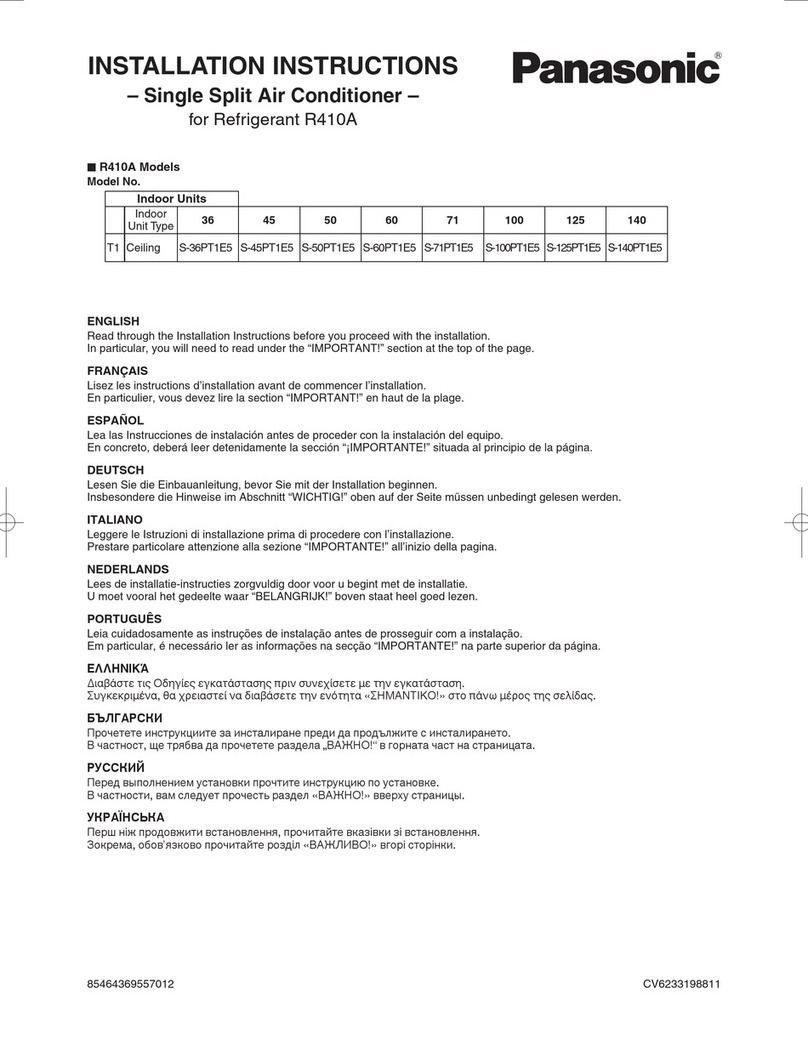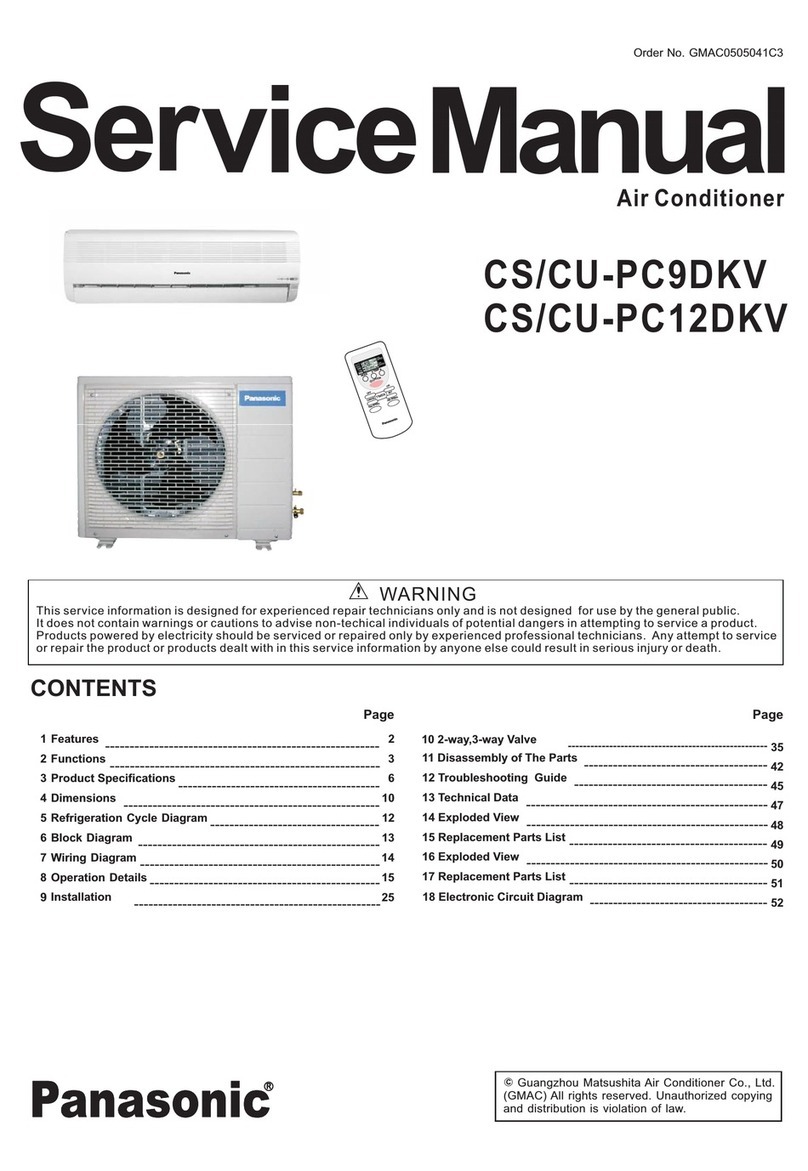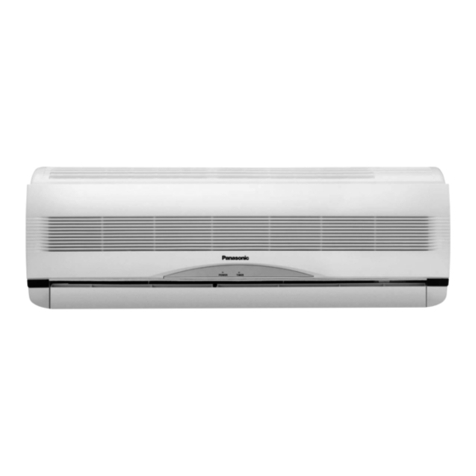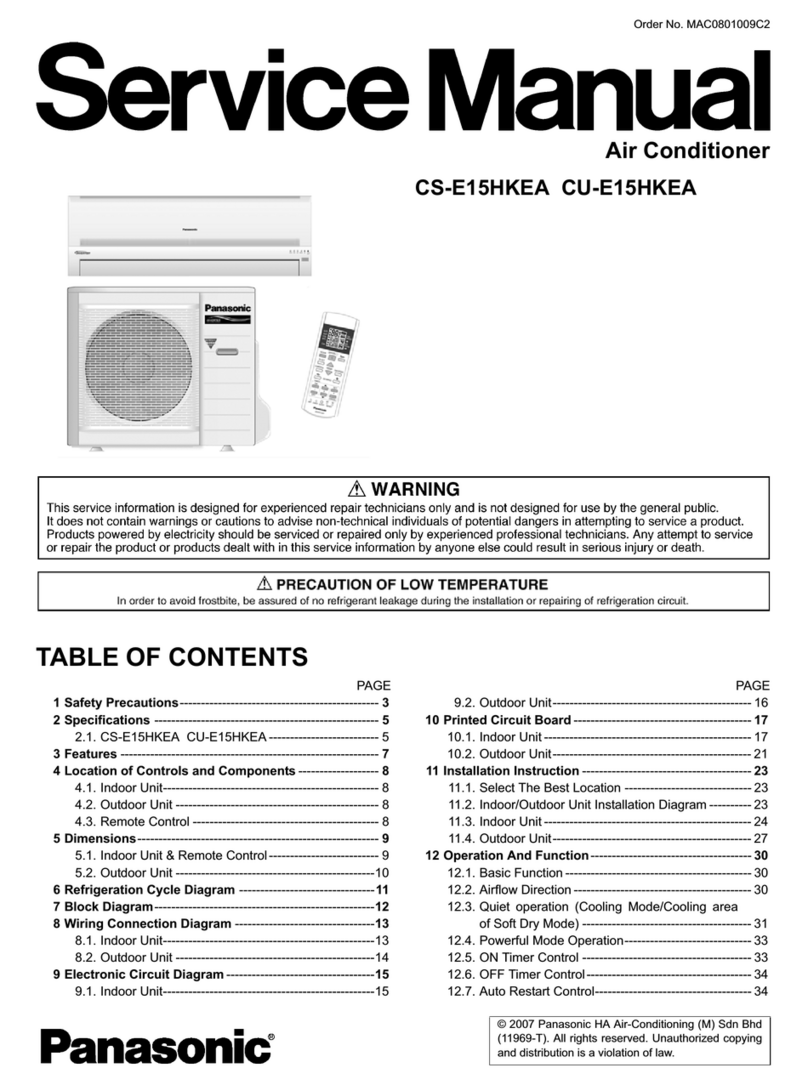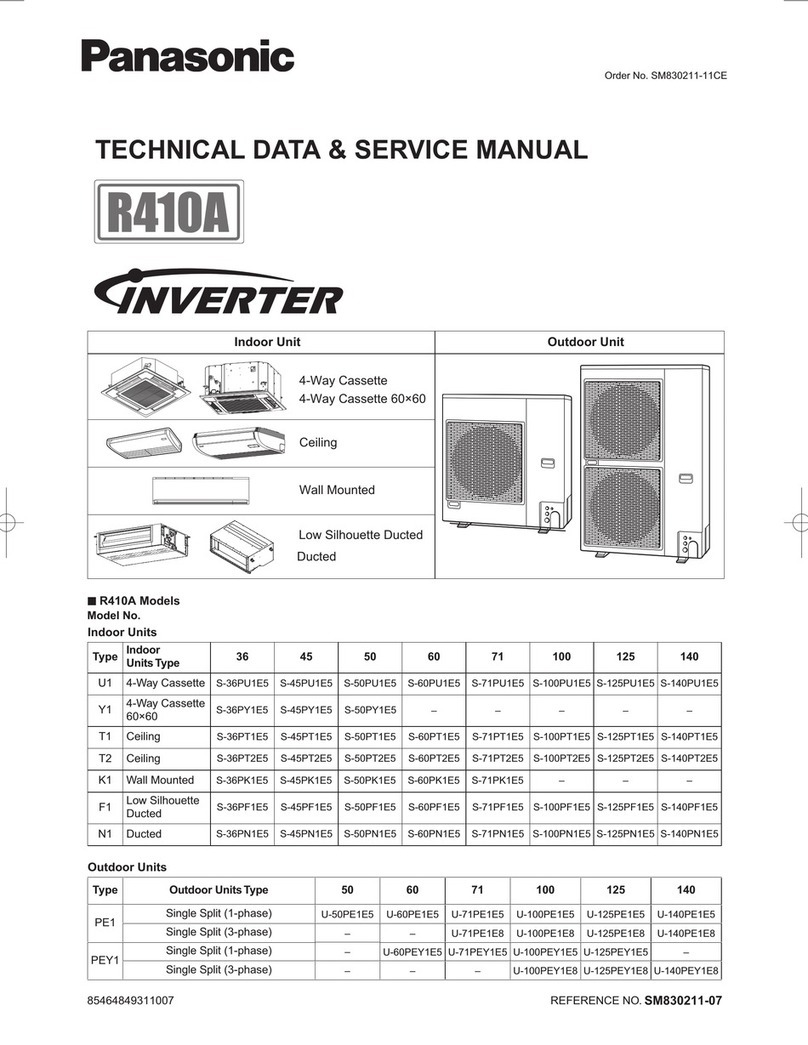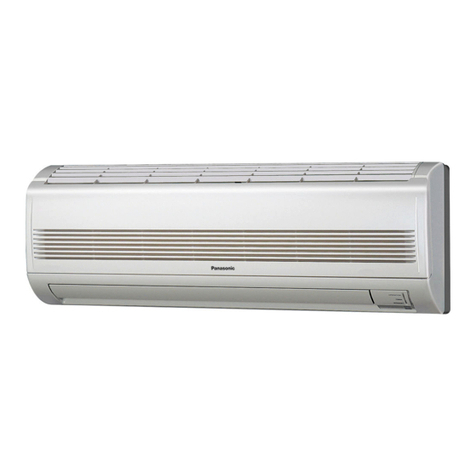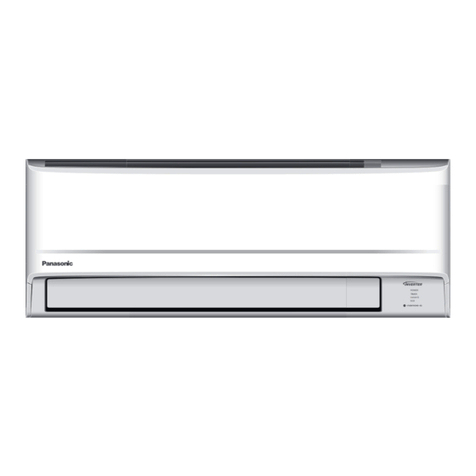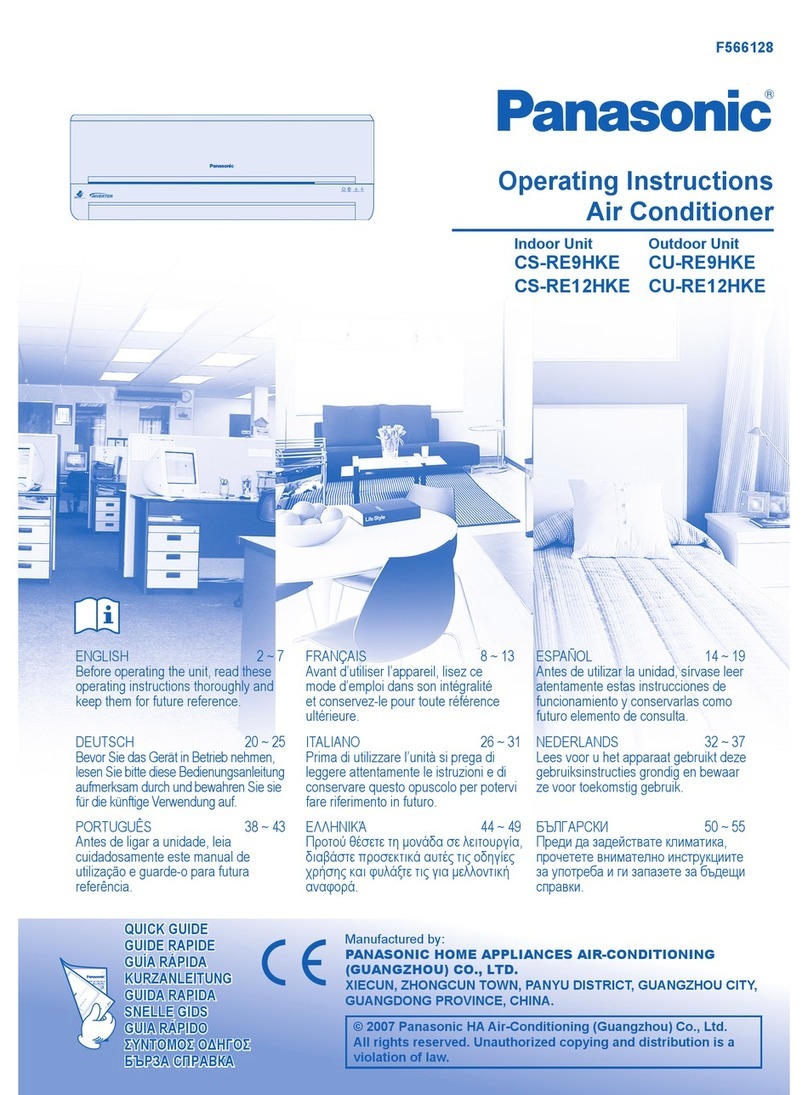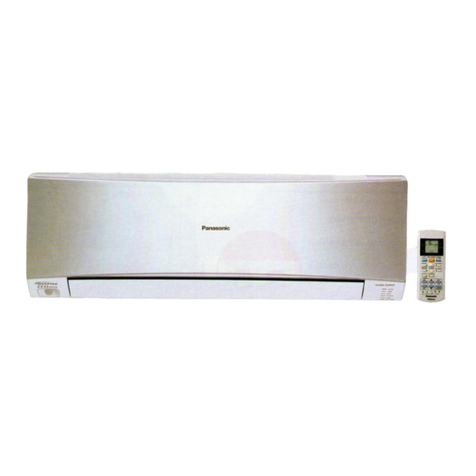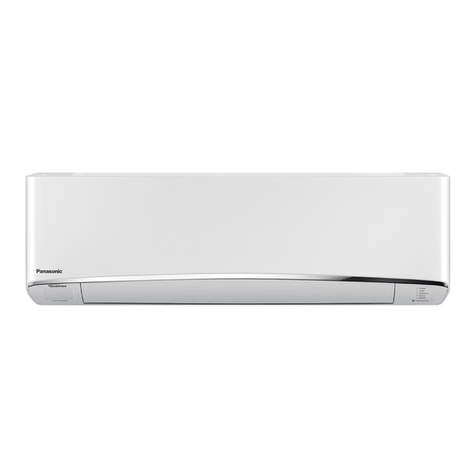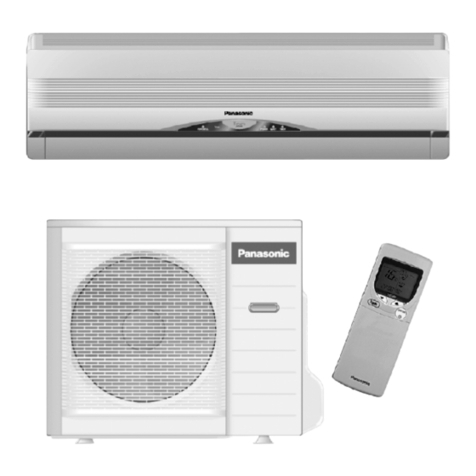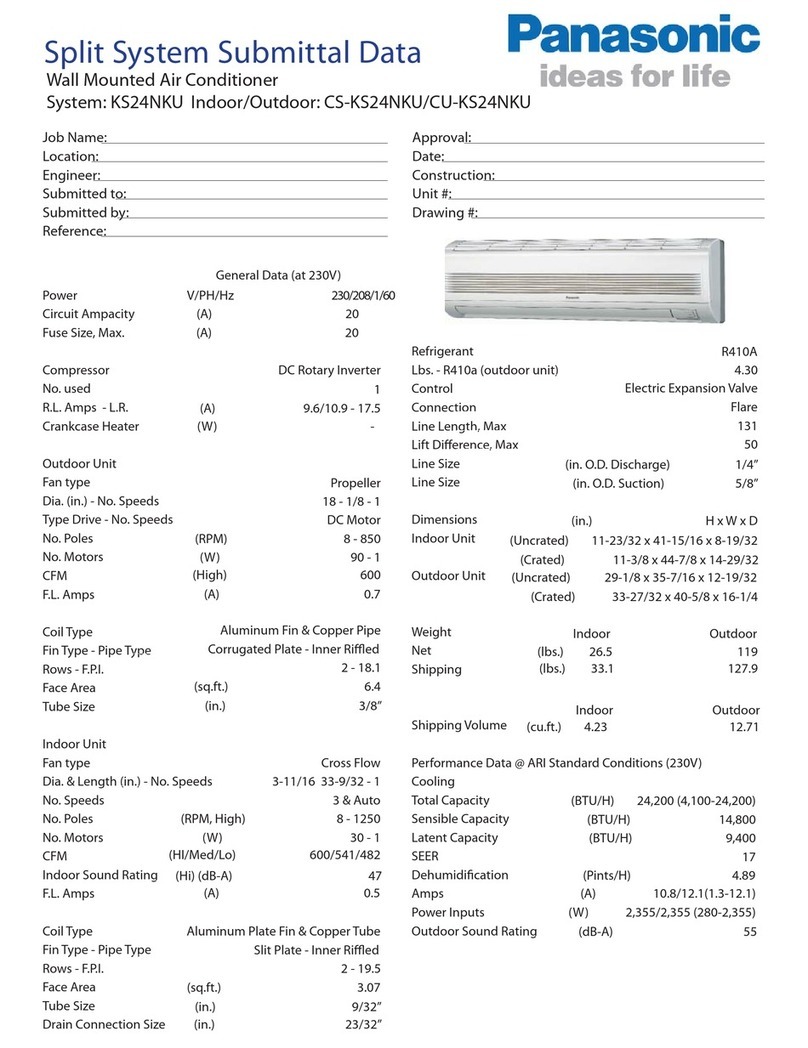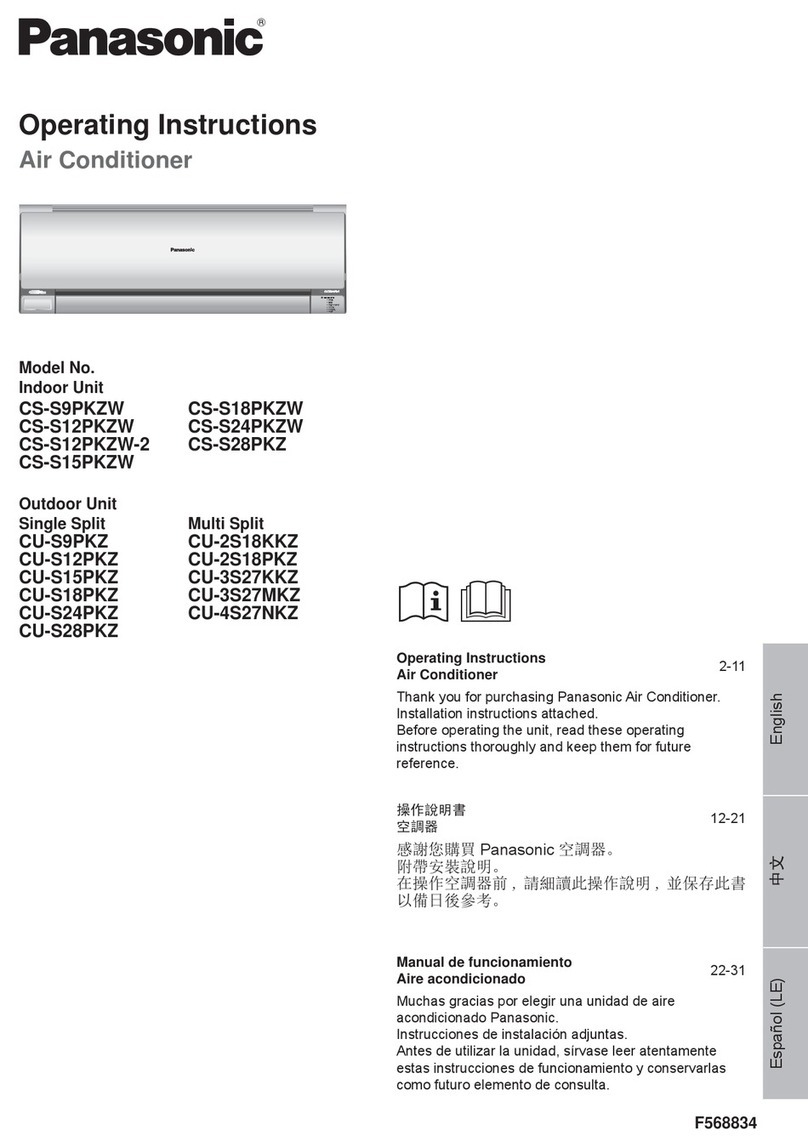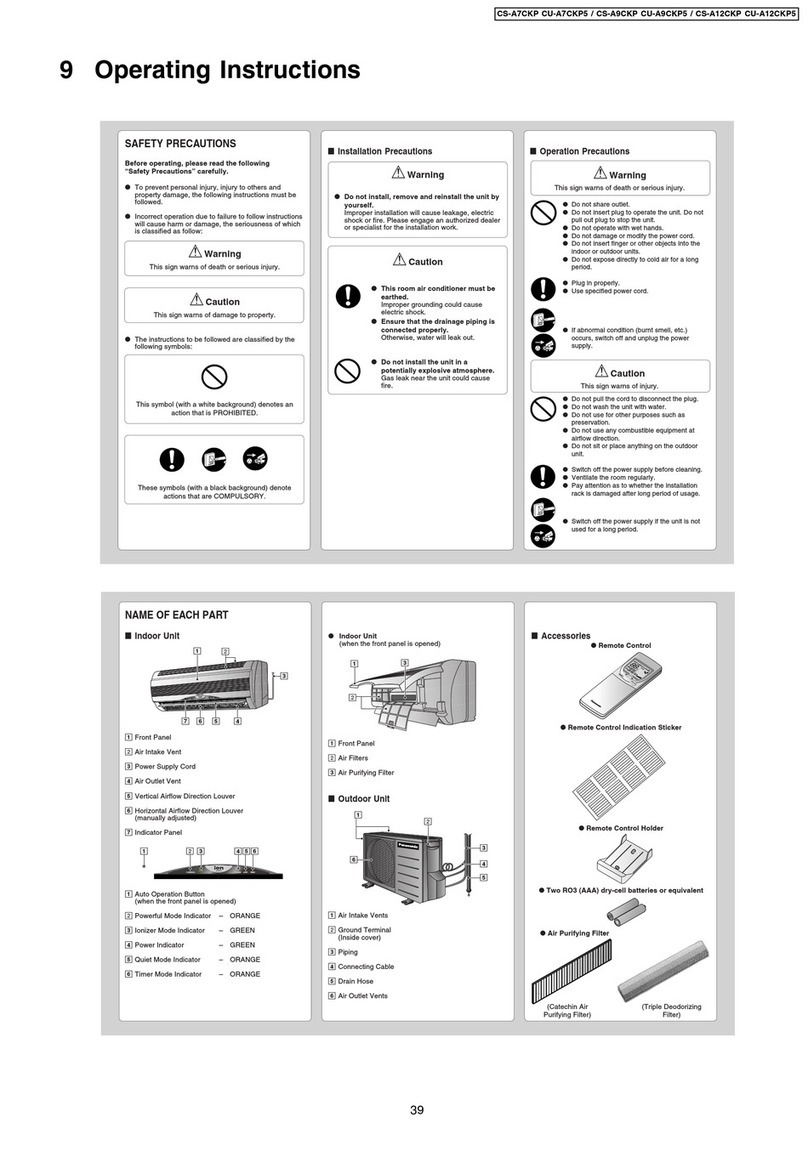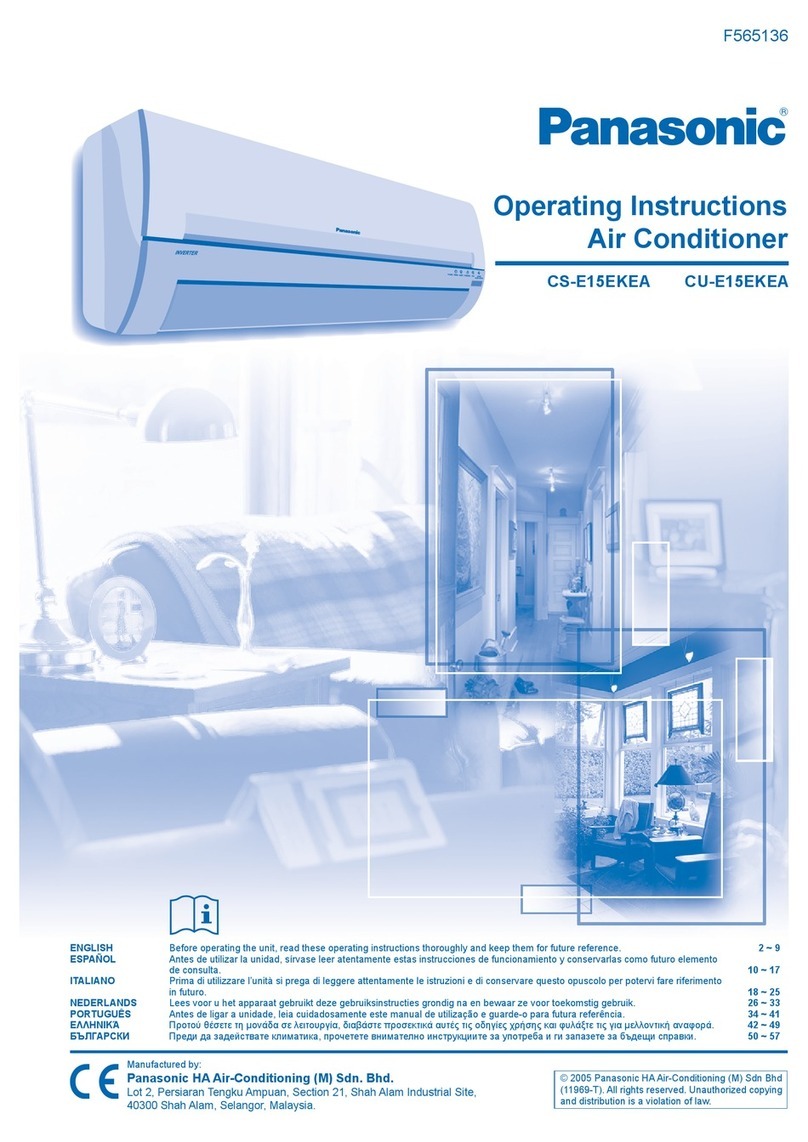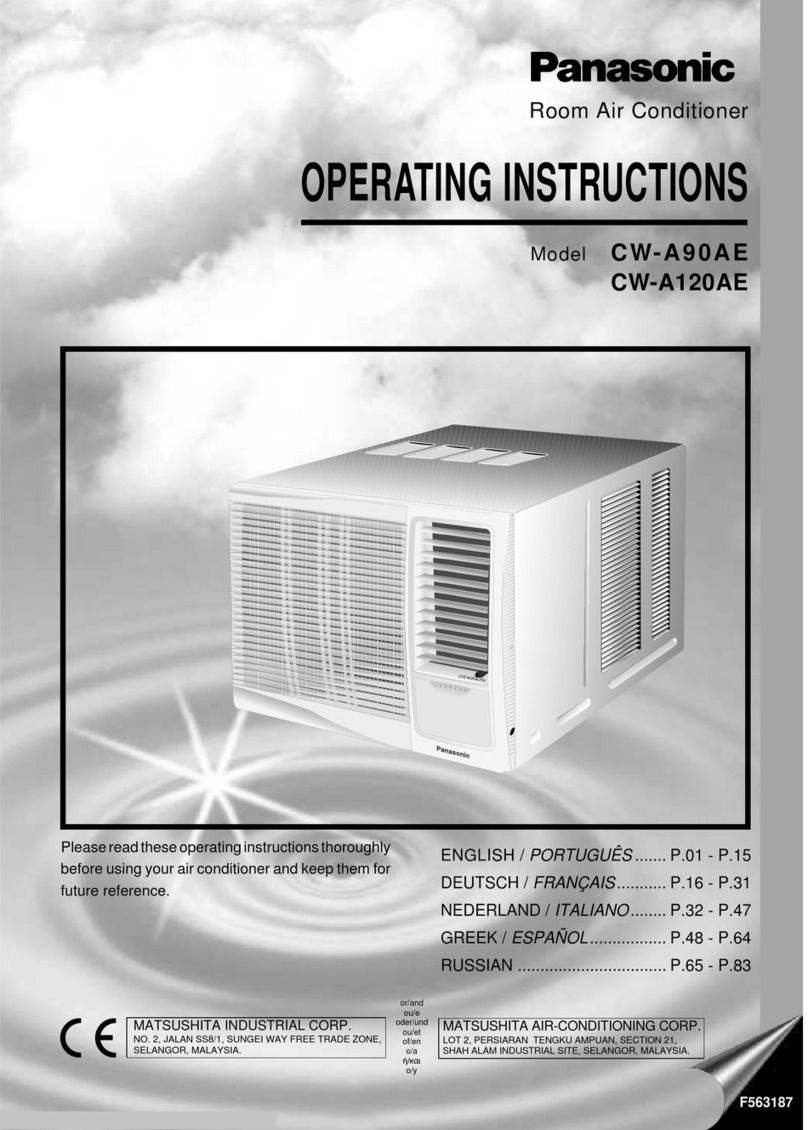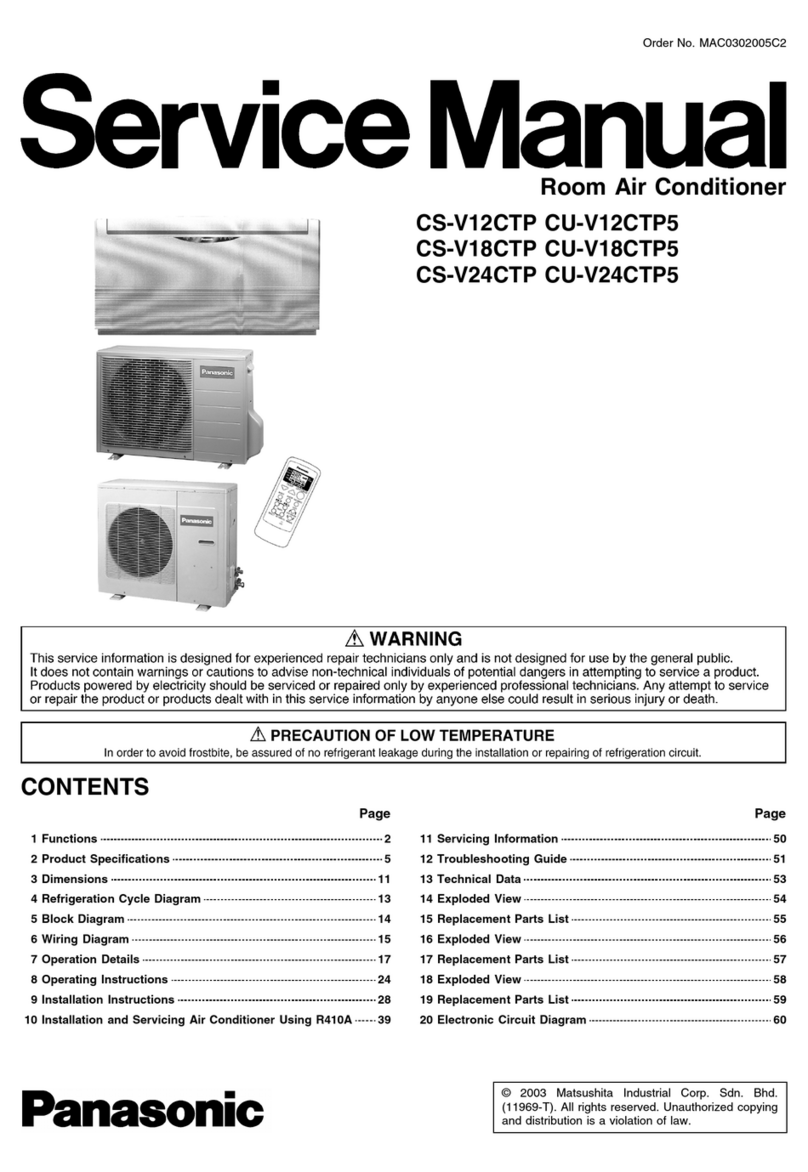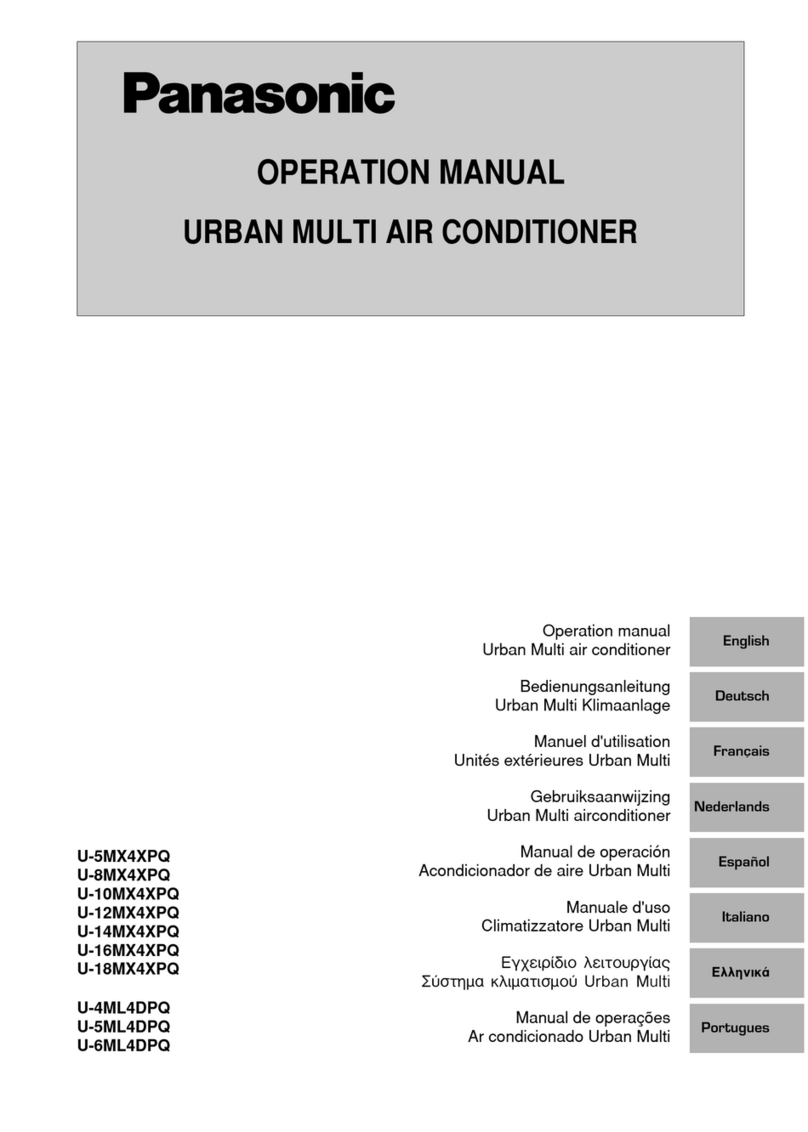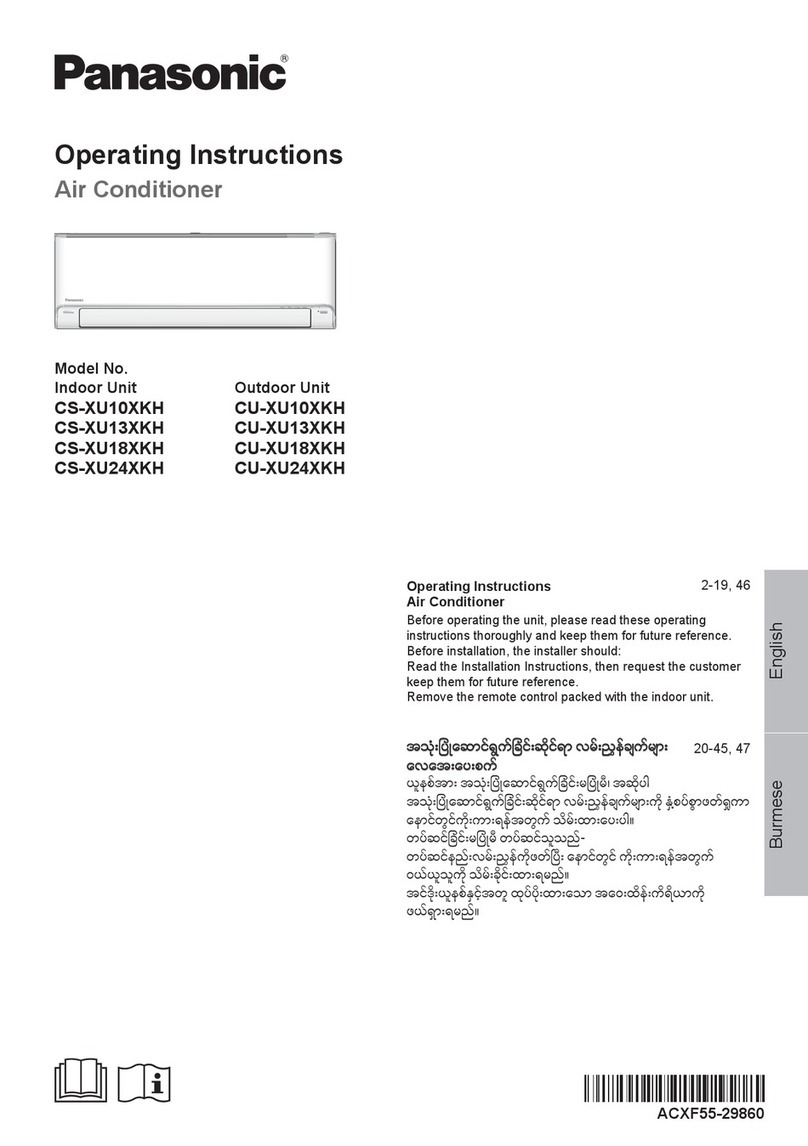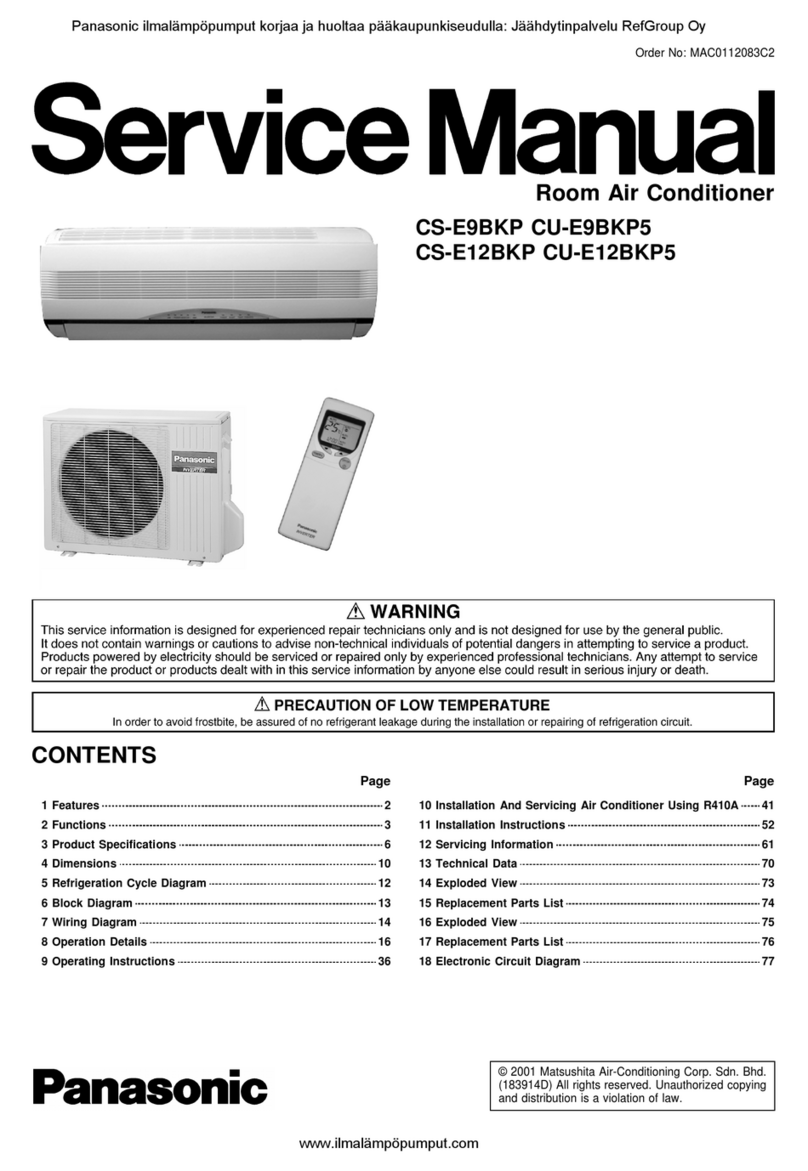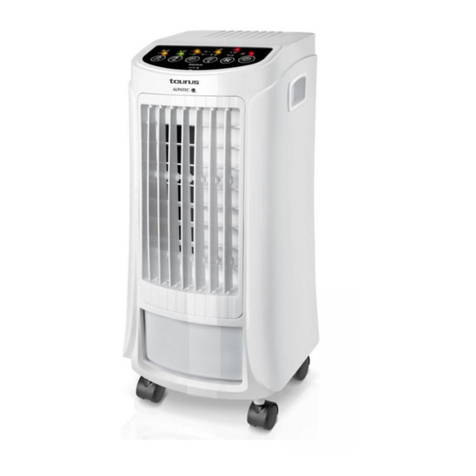
8
Precaution for using R32
refrigerant
The basic installation work procedures are the
same as conventional refrigerant (R410A, R22)
models.
Since the working pressure is higher
than that of refrigerant R22 models,
some of the piping and installation and
service tools are special. Especially,
when replacing a refrigerant R22
model with a new refrigerant
R32 model, always replace the
conventional piping and flare nuts with
the R32 and R410A piping and flare
nuts on the outdoor unit side.
For R32 and R410A, the same flare
nut on the outdoor unit side and pipe
can be used.
The mixing of different refrigerants
within a system is prohibited. Models
that use refrigerant R32 and R410A
have a different charging port thread
diameter to prevent erroneous
charging with refrigerant R22 and for
safety.
Therefore, check beforehand. [The
charging port thread diameter for R32
and R410A is 1/2 inch.]
Must always ensure that foreign matter
(oil, water, etc.) does not enter the
piping. Also, when storing the piping,
securely seal the opening by pinching,
taping, etc. (Handling of R32 is similar
to R410A.)
•
Operation, maintenance, repairing
and refrigerant recovery should be
carried out by trained and certified
personnel in the use of flammable
refrigerants and as recommended
by the manufacturer. Any personnel
conducting an operation, servicing
or maintenance on a system or
associated parts of the equipment
should be trained and certified.
•
Any part of refrigerating circuit
(evaporators, air coolers, AHU,
condensers or liquid receivers) or
piping should not be located in the
proximity of heat sources, open
flames, operating gas appliance or an
operating electric heater.
•
The user/owner or their authorised
representative shall regularly check
the alarms, mechanical ventilation
and detectors, at least once a
year, where as required by national
regulations, to ensure their correct
functioning.
•
A logbook shall be maintained. The
results of these checks shall be
recorded in the logbook.
•
In case of ventilations in occupied
spaces shall be checked to confirm
no obstruction.
•
Before a new refrigerating system
is put into service, the person
responsible for placing the system
in operation should ensure that
trained and certified operating
personnel are instructed on the
basis of the instruction manual
about the construction, supervision,
operation and maintenance of the
refrigerating system, as well as the
safety measures to be observed, and
the properties and handling of the
refrigerant used.
•
The general requirement of trained
and certified personnel are indicated
as below:
a) Knowledge of legislation,
regulations and standards relating
to flammable refrigerants; and,
b) Detailed knowledge of and skills in
handling flammable refrigerants,
personal protective equipment,
refrigerant leakage prevention,
handling of cylinders, charging,
leak detection, recovery and
disposal; and,
Safety precautions
